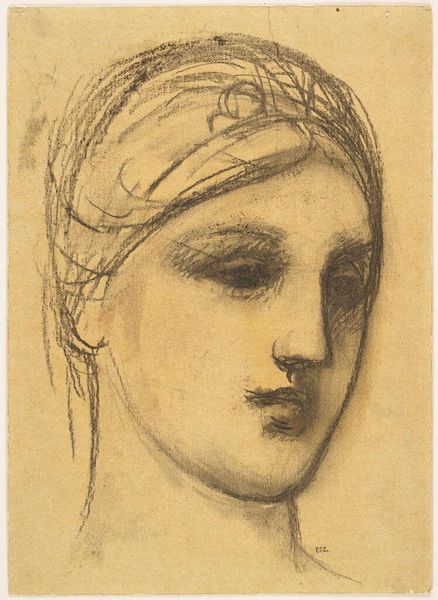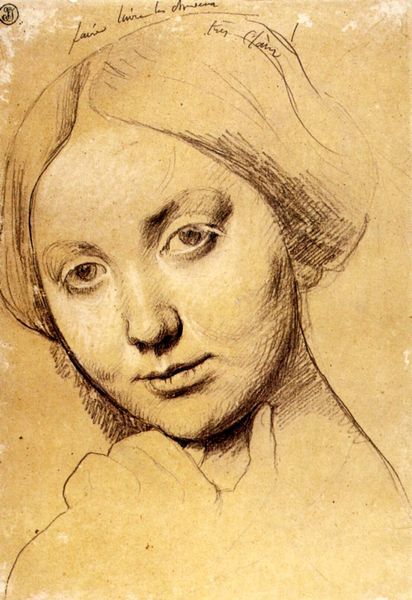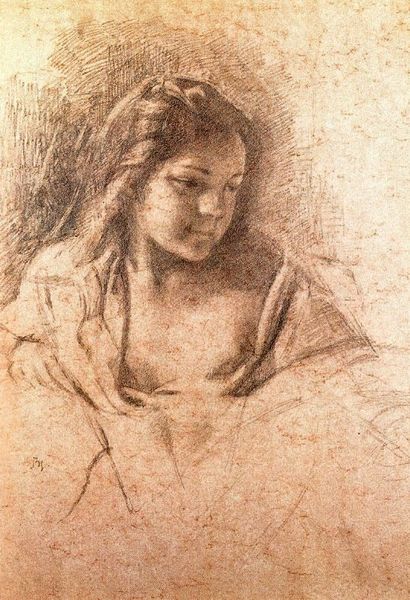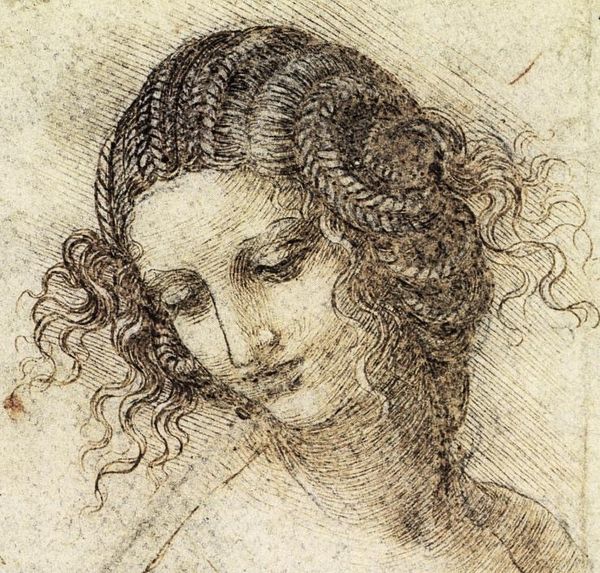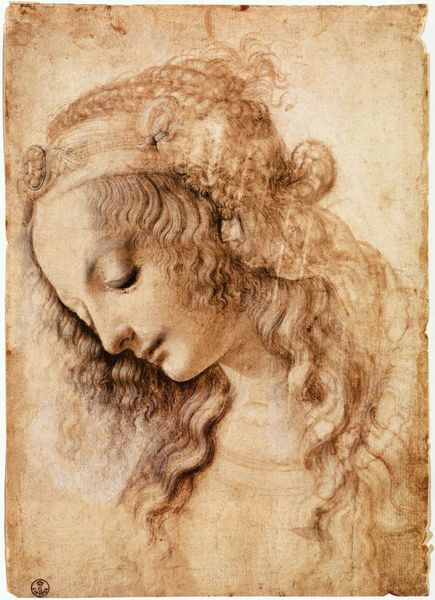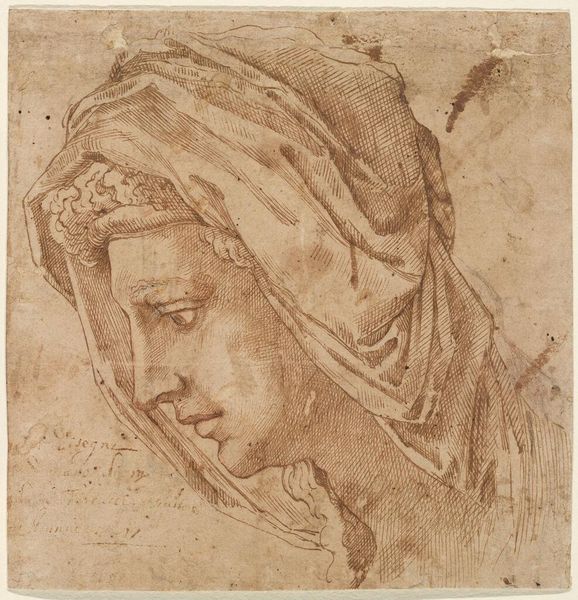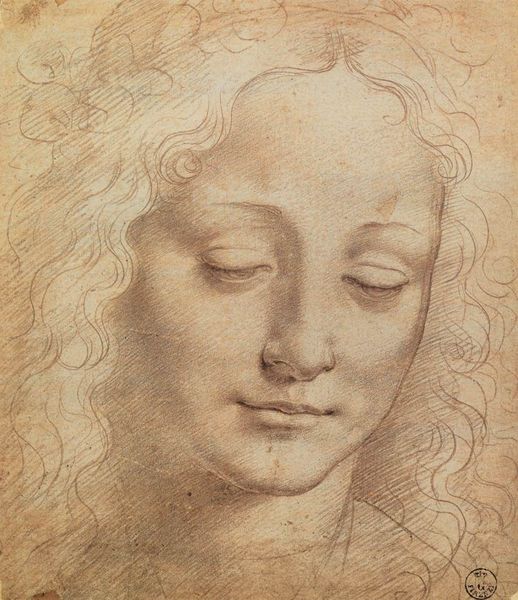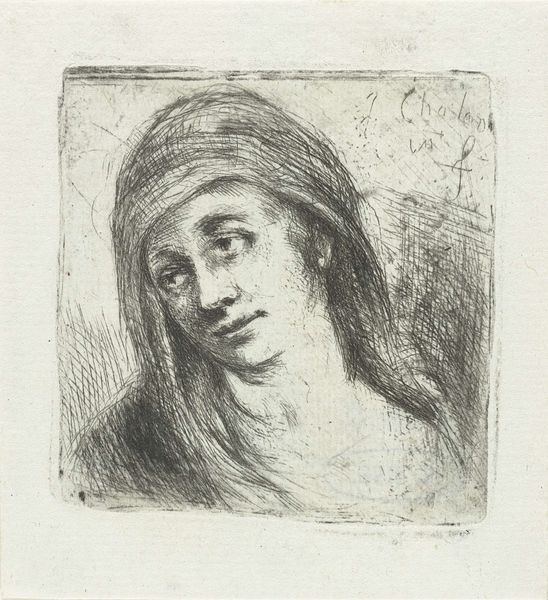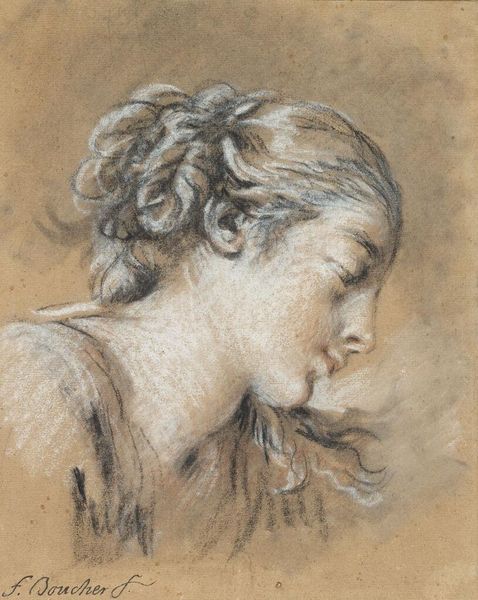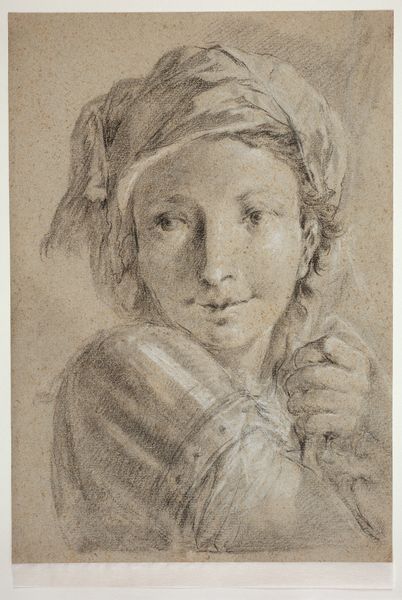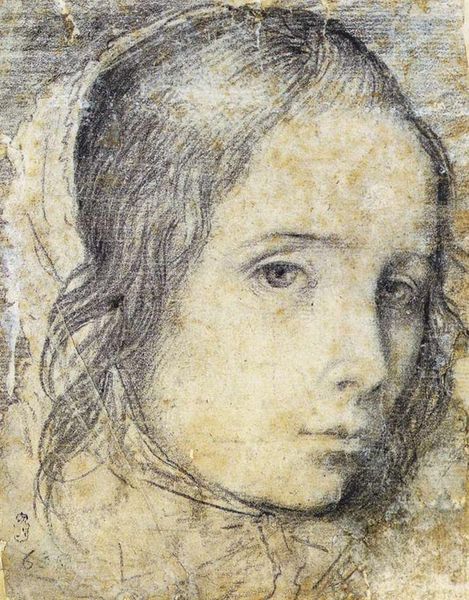
drawing, pencil
#
portrait
#
pencil drawn
#
drawing
#
medieval
#
self-portrait
#
head
#
face
#
pencil sketch
#
classical-realism
#
charcoal drawing
#
figuration
#
11_renaissance
#
pencil drawing
#
sketch
#
pencil
#
christianity
#
line
#
nose
#
portrait drawing
#
history-painting
#
northern-renaissance
#
academic-art
#
italian-renaissance
Copyright: Public domain
Editor: Here we have Leonardo da Vinci's "Head of Saint Anne," a pencil drawing from around 1510. There's such a delicate, almost melancholic feel to the piece. What strikes you most about it? Curator: What strikes me is how Leonardo uses a study of an older woman's head as a way into a much larger meditation on lineage and the female figure within religious history. Beyond just the beautiful technique, we need to consider the historical context of representing female saints and their power within the church, and how Leonardo might be subtly commenting on or challenging those established roles. What do you think about the way the gaze is averted? Editor: It’s like she's contemplating something deeply personal. Does that tie into your point about the female figure's role? Curator: Precisely. Renaissance society placed women, even saints, in very specific roles. This downward gaze could be interpreted as humility, piety, but also perhaps as a quiet defiance, a space for internal reflection outside the patriarchal gaze. Consider how power was visualized then. Does her expression, despite being downcast, suggest something more complex? Editor: I see what you mean. There's a sense of wisdom in her expression. Maybe it’s not just meekness but a knowing… something that comes with age and experience. Curator: Absolutely. And it's through these nuances that Leonardo invites us to question the established narratives. This isn't simply a beautiful drawing; it's a challenge to unpack the complexities of female representation. It is a work of art deeply engaged in cultural discourse. Editor: It’s fascinating to think of it as more than just a portrait but as an argument, a subtle challenge to the status quo. Curator: Indeed, and that's why situating it within the sociopolitical climate is essential for understanding its radical potential. I'm now wondering: could the averted gaze and faint smile challenge viewers in unexpected ways? Editor: I'll definitely be looking at Renaissance portraits differently now.
Comments
No comments
Be the first to comment and join the conversation on the ultimate creative platform.
